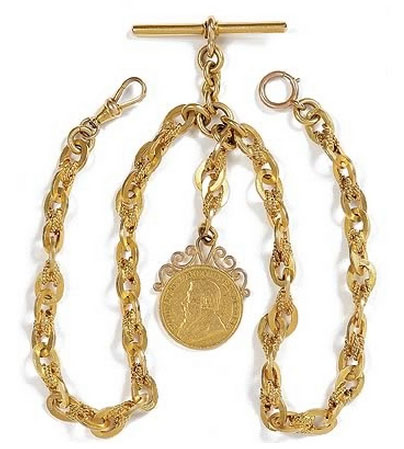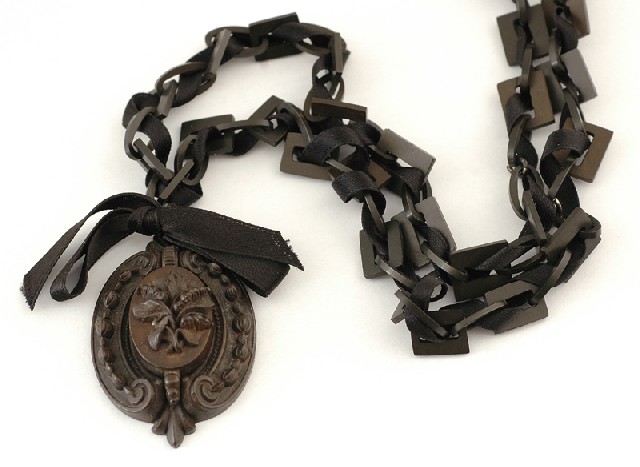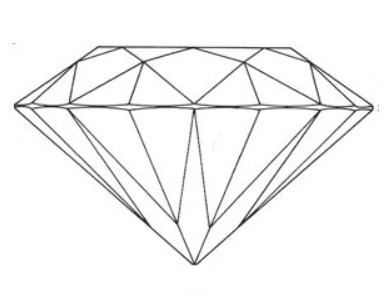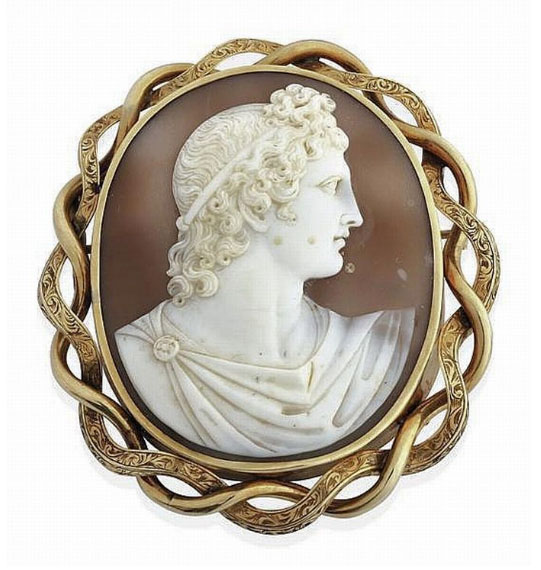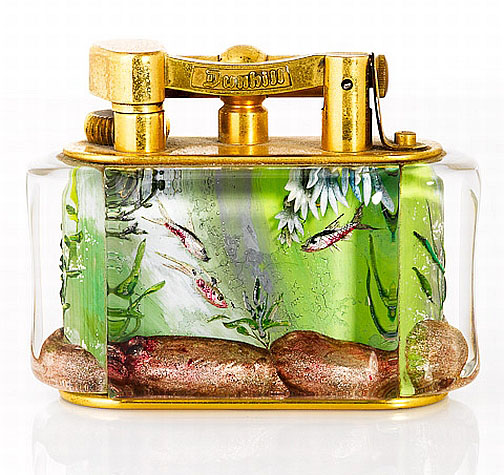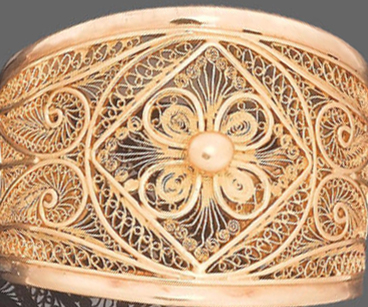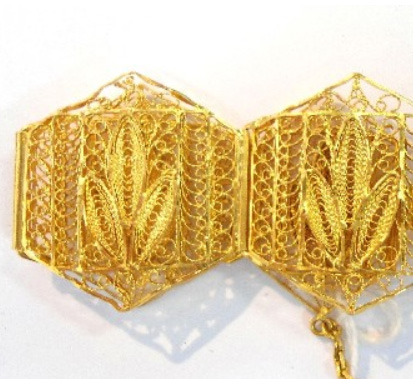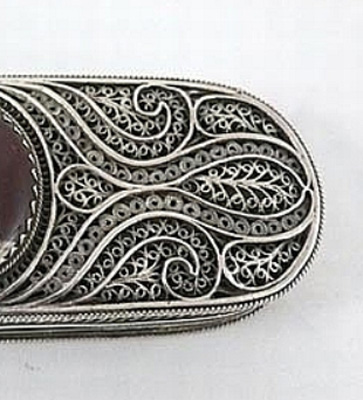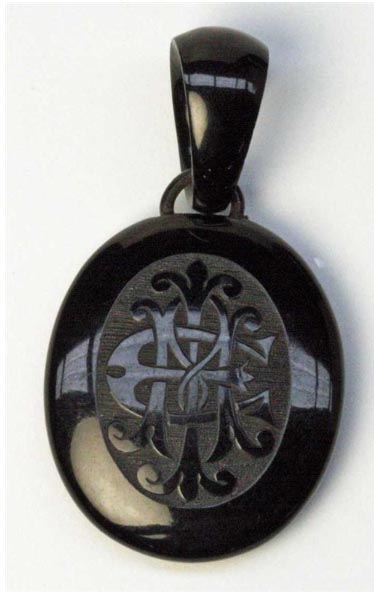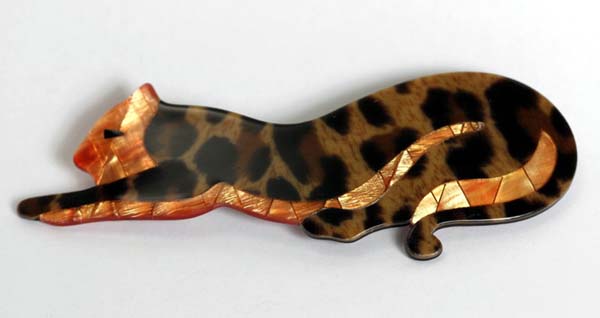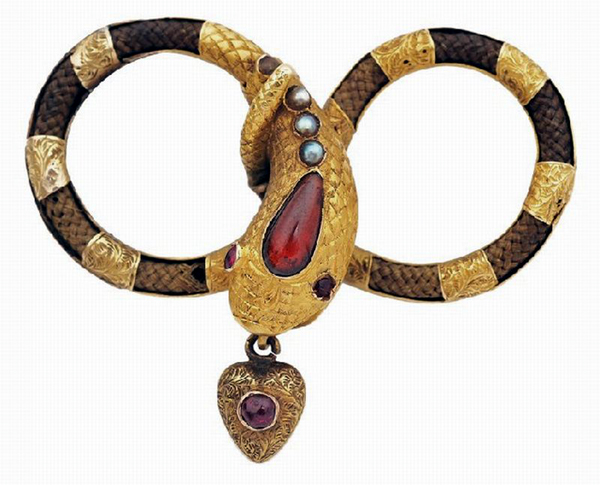Learn about antiques and collectables...
Click on a category below to show all the entries for that category.
Learn about and understand the items, manufacturers, designers and periods as well as the specialist terms used in describing antiques and collectables. Either click one of the letters below to list the items beginning with that letter, or click on a category on the left side of the screen to list the items under that category.
"dearest" Jewellery
Jewellery set with precious stones, the first letters of each which spell out the word "dearest: diamond, emerald, amethyst, ruby sapphire and topaz.Usually a ring or pair of earrings
Akoya Pearls
Akoya pearls are lustrous and are generally white or cream coloured with overtones of rose, silver, or cream. Although Akoya pearls may seem similar in appearance to Freshwater pearls, they are smoother and rounder. They are sourced from the Akoya oyster found off the coast of Japan and China, and are associated with Kokichi Mikimoto, founder of Mikimoto who created the world’s first cultured pearl in 1893.
Albert Chain, Albertina Chain
An Albert chain, usually made of silver or gold, is a watch chain that was worn in the 19th century. It has a "T" bar on one end, which is used to attach the chain to a button hole in a waiscoat, while the other end is fitted with a swivel hook to attach the watch. There was usually a small length of chain joined to the end with the "T" bar, to which a fob, seal or a charm was attached. When the watch is placed in the waistcoat pocket, the looped chain and fob-end is visible. The links are often twisted to allow the chain to lie flat on the waist coat.
The "Albert" chain was supposedly named after a style of chain worn by Prince Albert, the prince Consort and husband of Queen Victoria.
The "double" Albert was a chain symetrically draped between both watch pockets on the waistcoat, with the T-bar and pendant chain in the middle. One end of the chain had the watch attached, and the other end of the chain may have had Vesta (match) case, cigar cutter or small pocket knife attached.
The Albert chain continued to be used for its intended purpose until the early 20th century when the pocket watch was superceded by the wristwatch, after which it became fashionable to wear the Albert chain as a necklace.
An Albertina chain is the name given to a watch chain worn by women. The chains were generally finer than the Albert chains, and often were multi-stranded.
Amber
More frequently used to refer to the colour, than the material from which the word is derived, amber is the fossilized resin from ancient forests. It is not produced from tree sap, but rather from plant resin. The resin is aromatic, and can drip from and ooze down trees. In colour, it may be a deep honey colour, (amber), brown, or white. As it oozes out it fills internal fissures in the tree, trapping debris such as seeds, leaves, feathers and insects. The debris trapped within the amber can assist in dating the deposit.
In its natural state it is found in rocks, on the sea floor (from where it may be washed up to the shore) and mined, using both open cut and underground techniques. About 90% of the world's amber comes from Russia. Amber has recently been discovered at Cape York in Northern Australia
Amber is often incorporated in jewellery, and used in pipe stems. The shine on the surface of amber becomes even more intense when it is worn and used regularly. Genuine amber, when rubbed, will release a slightly musky scent.
Aventurine Quartz
Aventurine quartz is a variety of quartz that contains small sparkling mineral inclusions, typically of mica or hematite. The inclusions give the stone a shimmering or glittering effect, making it a popular choice for jewellery. It is found in various colours, including green, blue, brown, and red, with green being the most common. The green colour is due to the presence of fuchsite, a type of mica.
In jewellery making, aventurine quartz is often used for beads, pendants, and cabochons. It can be cut into various shapes and sizes and can be polished to a high shine. Aventurine quartz is also popular in tumbled stone form for use in necklaces, bracelets, and other jewellery.
Baroque Pearls
A Baroque pearl is a mis-shaped pearl. Instead of being spherical it may be uneven, lumpy, curved or ovoid. The name dervies from their use in the late 16th century, principally be German craftsmen who set them in pendants to form part of the body of creatures such as birds, dragons, sea monsters and so on. Nowadays baroque pearls are found with minimal settings in necklaces, earrings and pendants.
Bee Motif
The bee is a popular motif in jewellery design, often used to symbolize industry, hard work, and the natural world. They can be depicted in a variety of styles, from realistic to stylized, and are often used as a decorative element on rings, pendants, earrings, and other types of jewellery. In many cultures, bees are also seen as a symbol of prosperity and good luck, making them a popular choice for talismanic jewellery. Some people also choose to wear bee-themed jewellery as a way to show support for the conservation of bees, which are important pollinators that play a vital role in the health of ecosystems around the world.
Bog Oak
Bog oak and other bog timbers originate in up to 10 metres deep, that were formed from forests where the natural growth had been overtaken by peat-forming plants from which the bogs were created, and which preserved the trunks and main branches of trees.
The woods became very dark, almost like coal, stained by the tannins dissolved in the acidic water.
Bog wood represents the early stages in the fossilisation of the wood, with further stages ultimately forming lignite and coal over a period of many millions of years.
Bog wood is traditionally associated with Ireland but is also found in England and Scotland.
Bog oak was popular in the 19th century for decorative jewellery and other small items, and a souvenir trade based in Dublin using bog wood was active during that time.
Bombe Design in Jewellery
In the early 18th century, during the reign of Louis XIV, French court jewellers developed a new style of jewellery called "bombé" because of its bulging, curved shape.
The bombe design can be found in various styles of jewellery, from Georgian, Victorian, Art nouveau, to Art Deco and Retro eras, with the materials and techniques reflecting the era the jewellery was made.
The design is used for rings, bracelets, necklaces and earrings, where a curved or rounded shape is emphasized, giving an organic look to the piece, with the piece often made of gold and set with precious stones, such as diamonds, rubies, emeralds, and sapphires. The bombe design was also paired with other design elements such as engraving, enamelling, or gemstones
Brilliant Cut
In their naturally occuring state diamonds have little life or sparkle and for many centuries were simply cut in half and worn in amulets. Invented at the end of the 17th century by a Venetian diamond cutter, a "brilliant cut" diamond has 58 facets arranged in a regular geometric relationship, with 33 above the crown and 25 below on the pavilion.
The introduction of the brilliant cut increased the popularity of diamonds in jewellery as it was the first cut to reveal the fire of the diamond, with the light being internally reflected from one facet to another, and was superior to the previously used table cut and rose cut.Variants to the brilliant cut have emerged since the end of the 17th century, but the popularity of the original brilliant cut has continued to the present time, where it is still the most commonly found cut.
.
Byzantine Style in Jewellery
The Byzantine period refers to the time in history when the Byzantine Empire was in existence, which lasted from the 4th century AD to the 15th century AD. The Byzantine Empire was the continuation of the Roman Empire in the eastern Mediterranean, centered around the city of Constantinople (now Istanbul, Turkey). The Byzantine period is characterized by the rise of Christianity and the Eastern Orthodox Church as the dominant religion, as well as the fusion of Greek, Roman, and Eastern cultures.
Byzantine style jewellery is known for its intricate designs, rich colours and the use of precious stones such as pearls, diamonds and emeralds. These jewellery often featuring religious imagery such as crosses and religious figures like Mary and Jesus. Byzantine jewellery was also known for its use of granulation and filigree techniques, which involved creating intricate patterns and designs using small beads or wire. This style was also characterized by the use of enamels, which were applied to metal surfaces to create colourful and durable designs. These jewellery items are considered as the most beautiful and most valuable pieces of jewellery from the ancient world.
Cabochon Cut in Jewellery
A cabochon cut is a type of gemstone cutting where the stone is cut and polished in a convex shape with a flat bottom and a domed top, with no facets. This type of cut is typically used for opaque or translucent stones that have natural patterns or inclusions that are best displayed in this type of cut. Examples of stones that are often cut as cabochons include turquoise, opal, and moonstone.
Cameo
Cameos have been carved since antiquity, and a true cameo is a hard stone on which a design is cut in relief. Usually the stone used had a two colour bands, a dark band and a lighter band, and the image was cut into the light band leaving the darker band as background.
These cameos were carved from semi precious stones such as agate, onyx and carnelian.
However this summary is concerned with cameos produced in the 18th and 19th centuries, mostly as brooches, and most of the 19th century cameos are carved from shell.
If the cameo is carved from a semi precious stone, and well described it will usually name the stone or include the word 'hardstone' in the description, and if that word is not present the cameo can assumed to be a shell cameo. Hardstone cameos sell at a premium to a similar shell cameo.
However cameos can be made from other materials including ivory, lava, plastics and glass, and some are made by setting a relief carving to a contrasting background which could be of a different material.
Cameos that are created by a mould rather than carving are considered faux or fake cameos, although they are collectable in their own right as costume jewellery. This includes cameos in materials such as porcelain, glass, resin, Bakelite, celluloid or other plastics.
After 1850 demand for cameos grew, as they became popular souvenirs of the Grand Tour among the middle class. Italy was an especially popular destination due to its prestigious history in mythology, the arts and culture. Most of the finest cameos came from there, and were often bought as souvenirs, or sent back home as a gift for loved ones. Popular subjects for cameos included classical groups, the classical heads or busts of maidens, youths or warriors, and mythological deities.
By the end of the 19th century the popularity of the cameo was waning. Though they were still being produced, the quality of the carving in many cameos became poor, with figures and portraits being much cruder than their life-like predecessors of the Georgian and Victorian period.
When valuing a cameo, many factors have to be taken into account, including the materials used for the cameo, the quality of the carving, the desirability of the subject matter and whether the subject matter is rare. The quality of material and workmanship of the mount is also important. Any damage to a cameo can affect its value.
The evaluation of a cameo should include an examination to reveal any cracks or breaks, and this can be ascertained by holding the cameo up to a strong light, and/or examining it with a magnifying glass or jewellers loupe.
Cannetille Work
Cartier
Cartier is a luxury goods manufacturer founded in 1847 by Louis-François Cartier in Paris, France. The company began as a jewelry workshop and soon gained a reputation for producing high-quality, innovative designs. In the late 1800s, Cartier began to expand its product line to include watches and other luxury goods.
In the 1920s and 1930s, Cartier became known for its Art Deco designs and its use of precious materials such as gold and diamonds. The company also began to produce a wide variety of luxury goods, including pens, lighters, and cigarette cases. In 1917, the company was sold to the jeweller Alfred Cartier, Louis-Francois' son, who further developed the brand.
During the 1950s and 1960s, Cartier continued to be a major player in the luxury goods market, and it began to develop its own line of perfumes and accessories.
In 1972, the company was acquired by a consortium led by Joseph Kanoui, who helped to expand the company's presence in Asia and the Middle East.
Today, Cartier is a subsidiary of the Richemont group and it continues to produce a wide range of luxury goods, including watches, jewelry, and leather goods. It is known for its high-quality craftsmanship, distinctive design, and iconic brand.
Celtic Style Jewellery
Celtic style jewellery refers to jewellery that is designed and made in the style of the Celtic cultures of Europe. The Celts were a group of people who lived in Europe during the Iron Age and who were known for their intricate and ornate artwork, including jewellery. Celtic style jewelleryry is often characterized by intricate knotwork, interlacing patterns, and other decorative elements that are inspired by Celtic art and mythology.
Celtic style jewellery can be made from a variety of materials, including gold, silver, bronze, and other metals. It may also incorporate gemstones, such as amethyst, emerald, and peridot. Celtic style jewellery is often made by hand using traditional techniques, and it is often imbued with cultural and spiritual significance..
Chanel, Coco
Coco Chanel (1883 – 1971) opened a millinery shop in Paris in 1909 and went on to launch her own couture houses in Paris, Deauville and Biarritz. From humble origins, she became one of the greatest icons of fashion in the 20th century.
The creator of the little black dress and Chanel No. 5, Chanel pioneered a new style of women’s clothes, combining simplicity and comfort with elegance, to create an unmistakable style which had a great influence over the fashions of the 1920s and 30s.
Her innovations in costume jewellery were introduced through her Paris salon, where she opened a boutique specializing in accessories and jewellery.
Instead of copying the style of fine jewellery, her costume jewellery was designed specifically to reflect the elegant simplicity of her clothes and to compliment and ‘finish’ an outfit.
The simple but effective use of multiple strings of faux pearls with a black pullover epitomises this style. Other key pieces for Chanel include gold tone chains, pate-de-verre jewellery from Maison Gripoix and classic Maltese cross cuffs designed by Verdura.
Chanel closed her business when she was exiled to Switzerland during World War II, following her affair with a Nazi officer.
She re-invented the Chanel brand throughout the 1950s and into 1960s, working with designer Robert Goossens, producing long, rosary style necklaces, with chains of pearls and beads, and Maltese cross brooches decorated with glass cabochons in her signature colours of red and green.
In the mid 1950s the House of Chanel introduced leather handbags with metal and leather chains, which allowed carrying the handbag from the shoulder or in hand, and later, quilted-leather handbags.
After the death of Coco Chanel in 1971, control of the company passed to the Wertheimer family who had been shareholders and partners in the business since the late 1920s.
In the 1990s the company diversified into other luxury goods, including watches, sunglasses, all types of clutches and bags, and affordable jewellery.
As of the present time, Chanel S.A., known as the House of Chanel, is a French private company, that remains in the ownership of billionaires Gerard and Alain Wertheimer.
Chrysoberyl
Chrysoberyl is a mineral species that includes two common varieties: ordinary chrysoberyl and cat's eye chrysoberyl (also known as cymophane). The mineral is typically yellowish-green in color, but can also be brown, gray, or nearly colorless. It is often used as a gemstone, with the cat's eye variety being particularly prized for its chatoyancy (a reflective effect that resembles the slit eye of a cat). Chrysoberyl is relatively hard and durable, making it suitable for use in jewellery.
Cinquefoil
Cinquefoil is a decorative design element that is often used in jewellery and silver. It typically consists of five leaves or petals arranged in a circular shape, resembling a five-fingered leaf. The design can be found in a variety of forms, including rings, pendants, and brooches. It is a traditional design element in jewelry and can be made with various materials such as gold, silver and other precious metals.
Claw Set Jewellery
The description "claw set" in jewellery refers to a setting where the gemstone is held in place by metal prongs that resemble claws. These prongs are bent over the edges of the gemstone to secure it in the setting. This type of setting is commonly used for diamonds and other precious stones.
Closed Back in Jewellery
A closed back setting in jewellery refers to a type of setting where the back of the stone is not visible. The stone is typically set in a metal bezel or cup that covers the back and sides of the stone. This type of setting is commonly used for opaque or dark-colored stones, as it helps to improve the stone's overall appearance by hiding any inclusions or blemishes that may be present on the back of the stone.
Closed back settings are also used to protect the back of the stone from damage or to prevent it from falling out of the setting. This type of setting can be found in a wide range of jewellery styles, including rings, earrings, and pendants, and can be made from a variety of metals, including gold, silver, and platinum.
Collet Setting
A collet setting in jewellery is a type of setting that is used to hold a gemstone or other decorative element securely in place. The collet is a ring of metal that surrounds the stone and holds it in place. The collet is typically made of the same metal as the rest of the piece and is often used in vintage or antique jewellery.
In a collet setting, the gemstone is placed into a small metal ring, also known as a collet. The metal ring is then bent or folded over the edges of the gemstone to hold it securely in place. The collet is then attached to the rest of the piece of jewellery, such as a ring or pendant.
One of the benefits of a collet setting is that it allows the maximum amount of light to enter the stone, which can enhance its brilliance and sparkle. It also allows the stone to be seen from the sides, which makes it a popular choice for showcasing particularly beautiful or unique stones.
The collet setting is a classic and elegant setting and it is often found in antique jewellery, particularly from the Victorian and Edwardian periods.
Collier
A collier is wide necklace that encircles the neck from the collar bone to the chin, and as such is usually of shorter length than a conventional necklace.
Coral
Coral used in jewellery. Coral is a material that is commonly used in jewellery making. It is made up of the skeletons of tiny marine animals called coral polyps. There are many species of coral, but only one group, Corallium, is suitable for carving, and thus can be used in jewellery manufacture. These have a deep red or pink orange skeleton and are known as "noble coral" or "precious coral".
Doublet and Triplet
A doublet and a triplet are both composite imitation stones, consisting of two or three joined layers. A triplet is made with the crown and base of genuine material, but with a centre layer, usually of glass, the object being to make the stone appear larger than it really is. A doublet consists of only two layers.
Opal doublets are quite common and consist of a thin layer of opal cemented to an opal matrix or black glass.
Dunhill, Alfred Ltd.
Alfred Dunhill Ltd was founded in London in 1893 as a motoring accessories business.
In the 1900s, the company expanded into luxury tobacco goods. As cigarette smoking took off in the 1920s and ’30s, Dunhill became one of the most famous names in the field, opening shops in Paris, New York and Toronto and expanding into menswear, toiletries and other areas, but it is with smoking accessories that the firm is most notably associated.
Dunhill was particularly known for lighters, most famously the Unique lighter, launched in the early 1920s with the slogan ‘The lighter that changed public opinion’. Coming in various designs, the Unique could be operated with one hand; its design lessened the risk of petrol evaporation and it rarely needed filling. Dunhill also developed the first butane gas powered lighter.
Dunhill began manufacturing cigarettes in 1963. In 1967, Carreras Tobacco Company acquired a 51% interest in the company, and the company is currently owned by Compagnie Financière Richemont SA, a Swiss based luxury goods manufacturer whose brands include Baume & Mercier (watches) Cartier (jewellery and watches) IWC (watches), Montblanc (pens), Piaget (watches and jewellery)
Alfred Dunhill have retail emporiums for men in the major cities of London, Shanghai and Tokyo, and Hong Kong, referred to as the 'Homes of Alfred Dunhill'. As well being a retail outlet for Dunhill goods, these 'Homes' offer a range of services including a bespoke tailoring service, barber’s shop, fine wine cellars, bar or restaurant, screening room, and spa.
Dunhill's current product range includes men's luxury leather goods, writing implements, lighters, timepieces, fragrances and clothing.
Edward Fischer
Edward Fischer (1828-1911) migrated to Australia from Vienna in the early 1850s, and settled into business as a jeweller in Geelong, which at that time was an important commercial centre particularly for the export of wool. It was a very prosperous centre attracting many watchmakers and jewellers, as no doubt there were many well-to-do clients.
Fischer was an important jeweller in the town, producing outstanding quality silver and gold wares, indeed, he was commissioned to manufacture the first locally produced Melbourne Cup, and became well known for his design and craftsmanship in producing the Geelong Racing Clubs presentation cups from 1873 to 1890. He was also a quality producer of silverware for Kilpatrick & Co. and Walsh Bros. of Melbourne.
In 1891 Fischer sold his business and left Geelong, relocating to Collins Street, Melbourne, where he traded as E. Fischer and Son, Manufacturing Jewellers, Watchmakers and Opticians. Apparently the business was managed by his son Harry. Edward Fischer died in 1911, but the business continued until about 1916.
Jewellery by Fischer is marked FISCHER or E. FISCHER, GEELONG.
En Tremblant
En tremblant is a French term meaning "to tremble". It was first used to describe 18th and 19th century jewellery where parts of diamond set pieces were attached to a trembler to create movement in the jewel when worn. It's most common use was in brooches, especially for jewellery incorporating floral motifs or butterfly or dragonfly wings. There was a revival of the technique in the 1950s and 60s by Bulgari, and their jewellery became very fashionable with Hollywood stars.
Enhancer
An enhancer is similar to a pendant: a piece of jewellery that is attached to a necklace or chain worn around the neck. A pendant has a small hook allowing it to be hung from the chain, but an enhancer has a hinged clasp that opens and can be snap-shut, allowing it to be used on a wider range of necklaces: chains, beads and pearls.
Filigree Work - Jewels
Filigree is delicate and intricate ornamental metal-work made from thin threads of gold or silver, soldered and twisted together to give the effect of lace. The filigree work may be freestanding, or attached to the surface of an object.
Girandole in Jewellery
Girandole is a term used to describe the jewellery design of earrings, brooches and lockets that features multiple hanging chains, pendants, or tassels attached to a central decorative element. Girandole themed jewellery typically has an ornate, highly decorative appearance and is often made of precious metals and embellished with gemstones, pearls, or other decorative elements.
Granulation
Granulation is a jewellery-making technique that involves the application of small grains or balls of metal (typically gold or silver) onto a surface to create intricate and decorative designs. In the process of granulation, the metal granules are carefully melted and then dropped or placed onto the surface using a fine-tipped tool. Once they have been positioned, they are then soldered in place using a torch or other heat source. The result is a piece of jewellery that features intricate patterns and designs created entirely out of small, shining metal granules.
The technique dates back thousands of years and has been used by artisans across various cultures to create beautiful and unique pieces of jewellery. Granulation is a time-consuming and skilled process that requires patience, precision, and a steady hand. It is considered a lost art in some parts of the world and is highly prized by jewellery collectors and artisans.
Guard Chain
In the 19th century and early 20th century, a guard chain was attached to a watch, and also an item of clothing, such as a buttonhole or a waistcoat to prevent the loss of the watch. For ladies, the guard chains were used to hold the ladies fob watch securely and sometimes were long enough to be wrapped around the neck a number of times and worn as a necklace.
Hat Pins
Hat pins, usually from 10 to 30 cm long, were in use from about 1880s to the 1920s to anchor ladies' hats to their hair. For collectors, the interest lies in the heads. As to the pin, values are enhanced if the pin was made of silver and gold rather than steel. Other technical innovations also add value, such as swivel joints and point-protectors. Heads varied from plain glass to jewels, wood to porcelain, and there were novelty hat-pins which incorporated peep-scopes with scenic views and hat-pins where the head was a huge lightweight sphere.
Herringbone Link in Jewellery (component)
The herringbone link is a jewellery chain pattern that is named after the distinctive V-shaped pattern that it creates, resembling the bones of a herring fish. It is a popular and classic design that has been used in various types of jewellery, including bracelets, necklaces, and earrings.
The herringbone link is characterized by its tightly woven pattern, which features rows of thin, flat metal links that are arranged in a crisscross or zigzag pattern. The links are typically angled at 45 degrees, creating a distinctive "V" shape that gives the chain its unique appearance.
View further examples of Herringbone Link in Jewellery (component)
Jabot / Surete Pins
A jabot pin, also known as a surete pin is a fastening device consisting of a pin with a decorative ornament to each end. One end detaches allowing the pin to be passed through the fabric and then the end can be clicked or screwed back into place.
These pins were originally used to decorate or fasten a jabot, which was a piece of fabric worn around the neck, with frills and ruffles dangling over the chest.
However when the jabot was no longer fashionable, the pints were worn as jewellery in their own right, for example on hats.
Jet
Jet is a dense black fossilised wood, almost like coal, and very light in weight. It is easy to cut, so carved well.
It became popular in the Victorian era for mourning jewellery, which became fashionable after the death of Queen Victoria's husband Prince Albert in 1861.
The latter part of the Victorian era was characterised by the sentimentality associated with mourning. Black has been the colour for mourning in the Western world since at least the Roman Empire, and as well as jewellery, the period saw the colour used in furniture, clothing and stationery as a mark of respect to the deceased.
Jet was in abundant supply around Whitby in Yorkshire and so jet became the obvious material for this type of jewellery. Some jet was also imported from Spain at the height of its popularity in order to meet demand.
As well as factories producing jet items, carving of the material became a cottage industry, with the fruits of labour displayed in the front window of houses in and around Whitby.
Jet may show marks of the carver's tools unlike Vulcanite, a similar coloured material which was moulded into shape.
Imitations of jet were also made in glass, black onyx and black Bakelite.
Jet can become dull, or the surface can display a bloom, over the passage of time, and objects that retain their original shiny appearance will command a premium. Other factors contributing to value are the quality of the carving or engraving.
Joachim Matthias Wendt
In many respects the history of Wendt's is a potted history of Australian gold and silver smithing. State directories of the late 1800s show that they sold watches, jewellery, rings, trophies, church plate, optical goods and electroplate. They also repaired watches and jewellery.
Joachim Matthias Wendt arrived in Port Adelaide in 1854, just 18 years after the foundation of South Australia. He was born in 1830 in Denmark. His mother died when he was nine years of age, leaving his father to look after him and two sisters. Joachim became a watchmaker's apprentice.
He brought these skills to South Australia, quickly opening a small watchmaking and jewellery shop in Pirie Street, Adelaide. Business was good and so he soon moved to better premises in Rundle Street.
Wendt's soon became recognised as a top quality shop. The jewellery, silverware, watches and clocks were equal to the best which were imported. In 1864 and 1865 Joachim received first prizes at a Scottish exhibition. In 1871, Wendt's was selected to make silverware caskets featuring Australian motifs for the Duke of Edinburgh, who was visiting Adelaide and other towns.
So pleased was the Duke of Edinburgh with Wendt's craftsmanship that he purchased additional items and appointed J. M. Wendt 'Jeweller to His Royal Highness in this Colony', By this time, twelve silversmiths, watchmakers, jewellers and shop assistants were being employed. What could not be made locally was imported.
Wendt's reputation for quality was further confirmed by the award of two first prizes for silverware at the 1878 Paris Exhibition. Success followed success, leading to a broadening of interests, including an involvement in the building of the Theatre Royal, the Adelaide Arcade and the Freemason's Hall.
J. M. Wendt had married a widow, Johiamic Koeppen, in 1872. Her son Herman entered her husband's jewellery business and added Wendt to his name, becoming Herman Koeppen (H. K. J Wendt. He and his brother, Jule, in 1903 were made partners of the business, Jule was sent abroad to be the overseas buyer.
Joachim Wendt died in 1917 aged 87. Nonetheless, the business continued to flourish under H. K. Wendt's management. His eldest son, Alan, joined the business in 1919, becoming a partner. On his father's death in 1938, Alan became sole proprietor. In 1947, Alan's son Peter Koeppen Wendt, joined his father and they became the first directors of the newly formed private company.
The final managing director of J. M. Wendt's was Timothy Wendt. Five generations of the family held executive positions in the business until its closure at the end of the 20th-century.
A highlight in Wendt's long and successful history was to be commissioned by the South Australian Government to manufacture a necklace and ear-rings for Queen Elizabeth II, and cuff links for the Duke of Edinburgh, for their visit in 1954. The jewellery had to incorporate opals, the most magnificent of which was the 203 carat 'Andamooka' white opal owned by the Government. Palladium was chosen as the metal and the large opal was flanked by 180 diamonds. The necklace and earrings are illustrated.
A trade journal described the gift as follows: 'The opal and diamond necklet and ear-rings suite is mounted in jewellery palladium with the large opal as the centre of the necklet. This is flanked by elegant side pieces, hand-carved in an attractive scroll design handset with diamonds. The chain at the back is of diamonds, each set in a diamond-shaped setting alternating with links pierced in the matching scroll designs and finished with a diamond set snap.'
As Wendt's centenary year official history closed 'In this way Wendt's first hundred years were fittingly symbolised'. Alas, Wendt's has now closed
From: Carter's "Collecting Australiana", William & Dorothy Hall, published by John Furphy Pty. Ltd. 2005
Keshi Pearls
Keshi is a Japanese word meaning 'poppy seed', but not an indicator of the true size of the pearl. But keshi pearls are small, and are usually irregular in shape. They are sold by weight rather than size as is usual with pearls. Originally a by-product of pearl farming, most Keshi pearls are now deliberately cultivated.
Lea Stein
A French trained artist who was born in Paris in 1931, Lea Stein began making her whimsical pieces of jewellery in 1969 when her husband, Fernand Steinberger, came up with a process of laminating layers of rhodoid (cellulose acetate sheets) with interesting textures and colours.
The layers were baked overnight with a secret component of his creation and then cut into shapes for various designs of pins, bracelets, earrings and shaped decorative objects. Viewed from the side, as many as 20 layers of cellulose can be seen in some models, bonded together to make these pieces.
The most easily recognizable Lea Stein pin is the 3-D fox, which has been produced in a myriad of colours and designs. Often, lace or metal layers were incorporated into the celluloid, which produced an astounding number of unique textures. The 3-D fox's tail is looped from one piece of celluloid.
Many different styles of cats, dogs, bugs, bunnies, birds, ducks and other creatures were introduced, as well as Deco-styled women, mod-styled children, flowers, cars, hats, purses, gold-encased and rhinestone encrusted designs and lots of little "things" such as stars, hearts, rainbows... even pins resembling John Travolta and Elvis Presley.
These 'vintage' pieces of jewellery were made from 1969 until 1981 and are identified by a v-shaped pin-back which is heat mounted to the back of each piece, as are the pin-backs on her newer pieces. The v-shaped pin back is always marked 'Lea Stein Paris.' The smallest pieces have tiny straight pin-backs which say 'Lea Stein.' Some of the thinner pieces have the clasp glued or heat-mounted on a small plastic disk, but all of them are marked in the same way.
Locket
A locket is an item of jewellery, usually a pendant worn on a chain around the neck, that is hinged and opens to reveal a space, sometimes called a "keepsake compartment", used for storing a a personal memento, such as a miniature, a photograph or strands of hair.
Other styles of lockets are worn as a brooch or bracelet.
They have been around in various forms since the 15th century, but reached the peak of their popularity in the 19th century, when sentimentality was part of the national psyche.
They are most commonly made of gold or silver, often decorated with precious or semi-precious stones and come in many shapes including ovals, hearts and circles.
Millefiori
Millefiori, which translates from the Italian as "a thousand flowers" is a method of decorating glass with slices of coloured canes in flower design, embedded in clear molten glass.
The technique was known as far back as the first century BC and was revived and modified in Venice in the 16th century.
The process was used to make paperweights in Venice and Bohemia in the 19th century, and the technique spread to France, England and the United States.
Millegrain
A type of jewellery setting where the stone is held is held in position by small adjacent beads of metal. This method of securing the stone was popular in the 19th century.
Mourning Jewellery
In Victorian England there were strict protocols for mourning the death of a family member, relative or (in the case of servants) an employer of employer's family member. They were particularly observed by the upper classes, but followed by other classes where the apparel and accoutrements could be afforded.
Mourning protocols were mainly applied to women, who were expected to wear heavy, concealing, black clothing, together with a black crepe veil, and a cap or bonnet.
Mourning jewellery completed the ensemble.
For a widow, there were three stages of mourning, covering a period of two years or more. The first period of mourning, lasting for a year and a day, was known as "full mourning". "Second mourning" covered a period of nine months, and allowed for a slight relaxation on the colour and style of garments worn, and for mourning jewellery. "Half mourning" lasted from three to six months and more elaborate and coloured fabrics such as grey and lavender could be slowly introduced.
Different rules applied to men, children and servants, depending upon their relationship with the deceased.
When Queen Victoria’s husband, Prince Albert, died of typhoid in 1861, the Queen went into mourning, and continued mourning for the next forty years. She remained in full mourning for the first three years and dressed her entire court that way. The Victorian era reflected the Queen’s prudish ethics as well as, most visibly, her personal taste in mourning.
Although mourning jewellery predates the Victorian era, most antique mourning jewellery available in the marketplace is from the Victorian era.
One of the most popular materials used for the manufacture of mourning jewellery from the mid 19th century to the 1920s was a semi-precious black gemstone called jet. Jet was used to make traditional mourning jewellery such as watch-fobs, necklaces, rings, clasps and brooches.
The industry in producing jet jewellery was centred at the town of Whitby in North Yorkshire, where it was either collected from the beach or excavated at a number of inland locations in the North York Moors area.
The Whitby jet industry was at it's height in 1870s where it has been reported that approximately 1,500 men were employed in some 200 manufacturing workshops.
Another popular material used in the manufacture of mourning jewellery was human hair. A lock of the deceased's hair could be braided into a rope and used to make a watch-chain or a necklace, or placed inside a mourning lockets or a ring.
Other popular motifs in mourning jewellery were urns and snakes, (that symbolised eternity), skulls and skeletons.
By the 1880s photographs were being incorporated into lockets and rings, following a fashion set by Queen Victoria who included a photograph of Prince Albert in the mourning ring she wore in his memory.
The strict Victorian protocols of mourning, along with Victorian mourning jewellery, began to ease after the death of Queen Victoria in 1901.
When the queen died in 1901, traditional Victorian mourning clothes, jewellery and protocol died with her. Changing values meant that death became a taboo subject, not to be discussed in polite society. People no longer wanted to wear black and be reminded all the time, of the constant presence of death.
Muff Chain
A muff chain is a type of long chain, usually made of a precious metal such as gold or silver, that was worn in the 18th and 19th centuries as a practical accessory to hold a muff, which was a cylinder-shaped cover for the hands that was popular during this time. The chain was worn around the neck with the muff attached to one end, and the other end would be passed through a slit in the side of a coat or jacket, so that the muff could be held close to the body for warmth. Muff chains were often highly decorative and were sometimes embellished with gems or enamel work. While they are no longer commonly used for their original purpose, muff chains can be worn as a vintage accessory or as a decorative element in modern fashion.
Openwork in Jewellery
Openwork, also known as pierced work, is a decorative technique used in jewellery making that involves removing or cutting out sections of metal from a piece of jewellery to create a pattern or design. This technique can be used in a wide range of jewellery styles, including necklaces, bracelets, earrings, and rings.
Openwork jewellery can be made using a variety of different techniques, including hand carving, sawing, and laser cutting. The design can be simple or complex, and can feature a range of different shapes and motifs, from delicate floral patterns to bold geometric designs.
One of the advantages of openwork jewellery is that it can add visual interest and depth to a piece without adding a lot of weight or bulk. This can be particularly appealing in larger pieces, such as necklaces and bracelets, where heavy materials can be uncomfortable to wear.
Oxidised (finish in Jewellery)
An oxidised finish in jewellery, particularly gold, refers to a surface treatment that intentionally darkens or blackens the metal surface to create an antique or vintage look. The process involves using a chemical solution to speed up the natural tarnishing or corrosion of the metal, resulting in a dark, matte or semi-matte finish.
In gold jewellery, oxidised finishes are typically applied to lower karat gold alloys, such as 14k or 18k gold, rather than higher karat gold, such as 22k or 24k gold. This is because lower karat gold alloys contain more base metals, such as copper, which are more reactive and prone to tarnishing.
Oxidised finishes in gold jewellery can create a wide range of looks, from a subtle aged patina to a more dramatic blackened finish, depending on the strength and duration of the chemical treatment. This type of finish can add depth and character to jewellery designs, and is often used to create contrast between different elements or textures in a piece.
Padparadscha Sapphires
A padparadscha sapphire is the name given to a sapphire that is found in Sri Lanka. Colour can range from a salmon with a pinkish hue to an orange hue. In the Sinhalese language padparadscha is the name given to the color of a Lotus blossom. Sapphires with similar characteristics have been found in Vietnam, Tanzania and Madagascar, but there is dispute in the jewellery trade as to whether these stones should be called padparadscha. At times padparadscha sapphires are known to have been heat treated to intensify their pink coloration.
Parure
A parure, from the French "parer" - to adorn, is a matching set of jewellery, usually consisting of a necklace, earrings, brooch and bracelet. A demi-parure is a smaller matching set , literally 'half a parure', and could comprise any two or three of the above items, for example, a brooch with matching earrings, or a necklace with a matching bracelet.
Paste / Rhinestone / Diamante
Paste (or rhinestone or diamante) is the name given to a coloured glass composition used for imitation gemstones, or to imitation gemstones made of glass.
Although the technique of glassmaking had been known for thousands of years, but it wasn't until a lead glass with similar optical properties to diamonds were invented by a German jeweller working in Paris (either "Stras" or 'Strasser") in the early 18th century that "paste" gemstones became popular.
There was no social stigma attached to wearing imitation stones, and they were worn in situations where highway robbery was a possibility. The 18th century settings were of very high quality, equivilent to real gemstone jewellery.
In the nineteeth century the quality of paste jewellery declined and it has remained the poor cousin to genuine gemstones ever since.
Pate De Verre
A technique practiced in ancient Egypt from 1500 - 1000 BC, that was revived in France in the 1880s, pate de verre, which translates as "paste of glass", is a process in which glass is ground to a fine powder, mixed with adhesives, colouring agents and water to create a paste which is then mixed , placed into a mould and then reheated until molten.
The most prolific, and therefore best known practitioners include Gabriel Argy-Rouseau, Francois-Emile Decorchement and Almeric Walter.
Pave Setting
Pave setting is a style of setting stones in jewellery where the small stones are placed close together in holes drilled in the metal, the burr of the metal around the stone being pressed over the edges to hold the stone in position.
Pinchbeck
Pinchbeck, an alloy of copper (about 90%) and zinc (10%), is also known as 'poor man's gold'. This alloy is named after the watchmaker Christopher Pinchbeck who invented it in the 18th century. The invention of pinchbeck allowed ordinary people to buy 'gold effect' jewellery. Those who do not look carefully may be fooled into thinking this is gold. While resembling gold when newly made, pinchbeck darkens with age and does not bear any gold hallmarks.
Rhoda Wager
Rhoda Wager (1875 - 1953) was a London born jewellery designer who migrated to Fiji in in 1913, and then to Sydney in in 1918.
She had studied art in Bristol, and then attended the School of Art, Glasgow from 1897 - 1903 where she studied the Arts & Crafts style, and also exhibited there.
She opened premises in Martin Place, adjacent to the major hotels of the day, which supplied much of her clientile, then later moved to Market Street and then Victoria Arcade Chambers. Her jewellery was also sold on consignment by the Sydney department store, Farmer & Co.
Where practical, her jewellery was clearly labelled with a silver plate soldered to the back, reading "WAGER" inside a rectangular frame.
Rhoda Wagers best known design was of trailing vines, leaves and tiny berries.
She retired in 1946.
Riviere
A riviere is a necklace made of a row of graduated single stones, usually diamonds.
Rose Cut
A flat based cut for a preious stone, leaving the surface covered with triangular facets, usually 24 in total.
It was introduced in the 15th century and popular during the 16th and 17th centuries.
The rose cut was the most popular form of diamond cut until the discovery of the brilliant cut at the end of the 17th century, after which its use declined.
Seals
A seal is an engraved stamp for making impressions on sealing-wax. The seal was made by heating sealing wax and dropping it onto the paper, and then placing the seal into the soft wax. Seals were originally used to provide authenticity to documents and proclamations, and in the 19th century to seal letters, before the introduction of the gummed flap. Seals were often set into rings, hung on watch fob chains or neck chains, and there was also a more substantial freestanding desk model with a handle. The seal could be made of any material that could be finely engraved with a monogram or other symbol, including agate, black onyx, bloodstone, cornelian, jasper and lapis lazuli. For desk seals, materials used for the handles included gold, pinchbeck, ivory, hardstones, silver, brass, steel, and coloured twist glass. Seals were fell out of use with the introduction of the penny post in 1840, which led to the evolution of the gummed envelope meaning it was no longer necessary to place a seal every envelope.
Shank
In jewellery, the shank of a ring is the hoop which encirles the finger.
Sulphide
A sulphide is a small opaque white medallion, usually depicting a figural group or a bust, made of china clay or glass paste and enclosed within transparent glass. Sulphides are found in paperweights, glass dumps (similar to paperweights) and jewellery.
Tennis+bracelets
An in-line diamond bracelet, so called because at the U.S. Open tennis tournament in 1987, Steffi Graf was wearing a bracelet of this design, which snapped in the middle of play and fell onto the court, at which time she requested the match be halted so she could retrieve the pieces.
Tsavorite
Tsavorite is a green coloured garnet, first discovered by a British geologist, Dr Campbell R. Bridges in 1961 in Zimbabwe while working for the United Kingdom Atomic Energy Authority.
Unable to obtain a mining permit, he began prospecting in Tanzania and in 1967 made a second discovery of Tsavorite in northern Tanzania in 1967. Dr Bridges commenced mining the deposit, but the mine was nationalised by the government, so Dr Bridges moved to Kenya, where he made a third discovery of the mineral at the end of 1970.
Tiffany & Co. began promoting the then unnamed mineral in 1973 in association with Dr. Campbell, and it was agreed it should be named Tsavorite, after the Tsavo National Park in Kenya, near to where it was mined.
Dr Bridges died aged 71 in 2009 on his property in Tsavo National Park, Kenya, when he and his son were attacked by a mob in a dispute over mining rights.
Willis & Co.
The brothers Richard and Thomas Willis arrived in Melbourne in 1858, and soon established themselves as jewellery importers and wholesalers. Over the next decade they becoming manufacturing jewellers. In 1874, the partnership was dissolved and the firm T. Willis & Co. came into being in 1875, under the control of Thomas & V. J. Willis. During the rest of the century the firm prospered, becoming importers of clocks, silver and electro-plated wares, as well as being wholesale jewellers and silversmiths, with premises in Melbourne Sydney and Perth. In 1904 the company changed it's name to Willis & Sons Pty. Ltd. selling to retailers throughout Australia. The manufacturing side of the business was closed in 1931 and the company reverted to importing.
